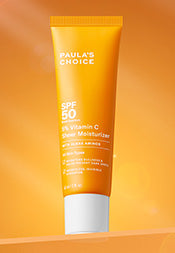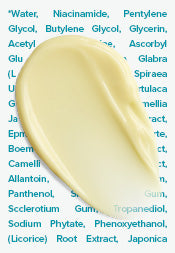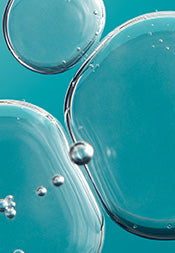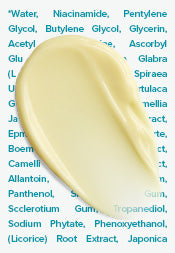How to Determine Your Skin's Undertone
When it comes to makeup, the key to buying the right foundation and concealer shade lies in understanding the real colour of your skin and discovering your skin’s undertone. It’s something top makeup artists can do in their sleep, but we can’t all have a glam squad at the ready (wouldn’t that be nice?). Contrary to popular belief, figuring out your skin tone and the corresponding undertone can be easier than you think.
What is skin’s undertone?
When shopping for foundation, you’ve probably heard the terms "cool," "warm," or "neutral" to describe which shade will look on the skin. Those terms refer to your skin’s undertone and determine which foundation shade best matches it.
The terms such as “cool”, “warm”, or “neutral undertones” refer to the colours that come through your skin from underneath the surface to affect its overall hue. It’s not about how light or dark your skin is; people of all skin colours, from very light to deep, can have cool, warm, or neutral undertones. Let Paula’s Choice break down the meaning of each term:
Cool: Hints of bluish, pink, or in general, a ruddy complexion.
Warm: Skin tone skews yellow, sallow, peachy, or golden.
Neutral: Has no obvious overtones of pink, yellow, or sallow skin, but rather the natural colour of the skin is more evident.
Among these undertone designations, there can be a large amount of variance, and your skin may even have a combination of different tones, as is often seen in medium-deep to deep complexions. The Pantone SkinTone Guide (a tool used by artists, transplant surgeons, prosthetic manufacturers, and other professionals for skin colour matching) features over 100 swatches intended to capture the range of human skin tones and undertones . But some argue that even that isn’t fully representative of the diverse spectrum of skin colours and undertones worldwide.
So, where do we get our skin’s undertones from? According to the journal of Clinical Nursing Research, “Four pigments contribute to skin colour: melanin, carotene, oxygenated haemoglobin, and reduced haemoglobin. Of these, the particle size, shape, and location of melanin contribute most significantly to overall colour; the more near the surface melanin is clustered, the darker skin will appear. Carotene gives the skin a yellow hue, whereas oxygenated and reduced haemoglobin is red and purplish blue. In addition to melanin, all light absorbing molecules and particles in the skin, or chromophores, play a part in perceived skin colour” .
How to determine your skin’s undertone
There are several ways to determine your skin’s undertone. Start by looking at the inside part of your arm as the underlying colour tends to show through more noticeably. Compared to other areas of your skin that are frequently exposed to the sun and are more susceptible to uneven skin tones, the inner part of your arm is naturally hidden from the sun and, therefore, is not sun-damaged or discoloured.
While this method is effective, there’s a possibility that it might not work for everyone and can be harder to distinguish on richly melanated skin. Hence, you can consider comparing your skin against a stark white background for people with deeper or darker skin tones to see if the undertones come through more noticeably.
If you notice that you have uneven skin tones that make it difficult to identify your undertones, you can consider revitalising your skin with effective skincare products from Paula’s Choice. Carefully formulated with ingredients to restore radiance, even out and improve the appearance of dull skin pigmentation, discover Paula’s Choice skincare for your uneven skin tone concerns.
Still not sure? Answering the following questions can help:
Do your veins appear bluish or deeper purple?
If the answer to either question is yes, you’re likely in the cool-toned spectrum.
Do your veins appear green?
If your veins appear greenish, you most likely skew toward the warm-toned.
Do you notice both green and blue veins?
You may be neutral-toned if you notice more than one colour of veins just beneath your skin’s surface. Additionally, you may have difficulty discerning an undertone—it will just all look neutral.
Do you look better in silver or gold?
Personal preferences aside, cool undertones tend to be flattered by silver/platinum; those with warm undertones look better in gold-coloured or gold jewellery. Neutral skin tones look equally great in both (lucky you!).
Does your skin look somewhat ashen or grey?
You might have the wild card of the bunch—olive skin—a combination of neutral and greenish hues unique to olive skin. Olive skin tone is very specific but not neutral, as some call it.
If your skin is on the lighter end of the colour spectrum, does it tan easily and rarely sunburn?
If so, you're more likely to lean toward a warm or neutral undertone. If not, there’s a good chance you fall into the cool-toned category. (But we’re all using sunscreen, right?)
What if you have an uneven skin tone (it’s more than one colour)?
Although a great foundation helps neutralise this, the secret sauce is the routine use of a skincare product with ingredients shown to make all skin tones look more even (and smooths skin texture, too). Vitamin C and niacinamide are two research-proven ingredients to promote a more even skin tone.
Dr. Corey L. Hartman points out, “Optimising the health of your skin will preserve its natural essence and keep environmental factors from causing shifts. This will make it easier to find a foundation that matches your skin all the time and won’t give you away under the bright lights of photographs. This can cause mismatches between face, neck and chest that are accentuated in photographs.”
Recommended Skincare Products
|
1. Lightly Tinted SPF Moisturizer This mineral-based SPF 30 has a mattifying tint that gives skin a more even-looking tone.Shop RESIST Super-Light Wrinkle Defense SPF 30 |
|
2. Unique Formula Resulting in More Radiant Skin This exfoliator clears pores and brightens skin, making your skin look younger and more radiant.Shop Defense Antioxidant Pore Purifier |
Shopping for a foundation for your undertone
Now that you’ve determined your skin’s undertone, we must caution you: Using a foundation categorised as your respective "cool" or "warm" skin tone may not always be the most flattering choice. For instance, some foundations labelled cool-toned can make skin look overly pink, and those labelled warm can skew toward your skin looking overly yellow or orange. The goal is to select neutral foundation shades with only the slightest hint of your skin’s undertone. You don't want your foundation to be too pink, yellow, or ashen.
If you have cool undertones, the foundation should look slightly, and we mean slightly, pinkish or bluish-pink in the bottle. If your undertone is warm, the foundation shade should have a subtle yellow or golden tone, and we mean very, very subtle. You can also consider using a primer like Paula’s Choice Smoothing Primer Serum SPF30 before applying foundation to ensure a more even skin tone and flawless skin.
Of course, there are always exceptions. If you have medium to deep skin colour with a reddish undertone, there is a likelihood that you will look better with a foundation that has a hint of brownish red (but not golden or peach).
Purely neutral-toned foundations may seem like a slam-dunk for olive skin, but not so quick. As Saj Mack, a professional makeup artist for film and TV, points out, “Light-to-medium olive skin tones may need to experiment with foundations that have a slightly peachy tone, making sure it doesn't go too peach or gold resulting in a sallow complexion.”
Don’t overthink it—the final deciding factor is to try the foundation on your face and check the results in daylight to see how it looks. It is especially important to look at your jawline after applying. If you see a noticeable line of demarcation between your neck and your face, keep trying until you find a shade that matches as closely as possible.
Saj Mack adds, "When choosing a foundation shade, I tell my clients first to match their skin tone and then choose the three corresponding undertones to that shade. For example, if your shade is "deep, " select deep with a cool, warm, and neutral undertone. Swatch those three on your jawline or chest area; the shade that blends in the most will be your perfect foundation."
What if you can’t find your exact foundation shade match? It’s not necessarily your fault. While the cosmetic industry has made great strides in recent years to improve and expand shade ranges, there is still more work to be done, especially when it comes to more shade variances for melanin-rich skin . Retailers such as Sephora and Nordstrom offer samples to try at home, and brands such as M.A.C. are well known for their in-store colour-matching by trained makeup artists. Other brands for their extensive shade ranges include Fenty, Make Up For Ever, NYX Cosmetics, and Pat McGrath Labs.
Shop our range of makeup prep products so that your skin can look its best all day.
References for this information
Plastic and Reconstructive Surgery Global Open, February 2020, pages 1-4
International Journal of Cosmetic Science, 2006, pages 427-437
Clinical Nursing Research, November 2012, pages 495-516
Advances in Journalism and Communication, 2019, pages 35-54











